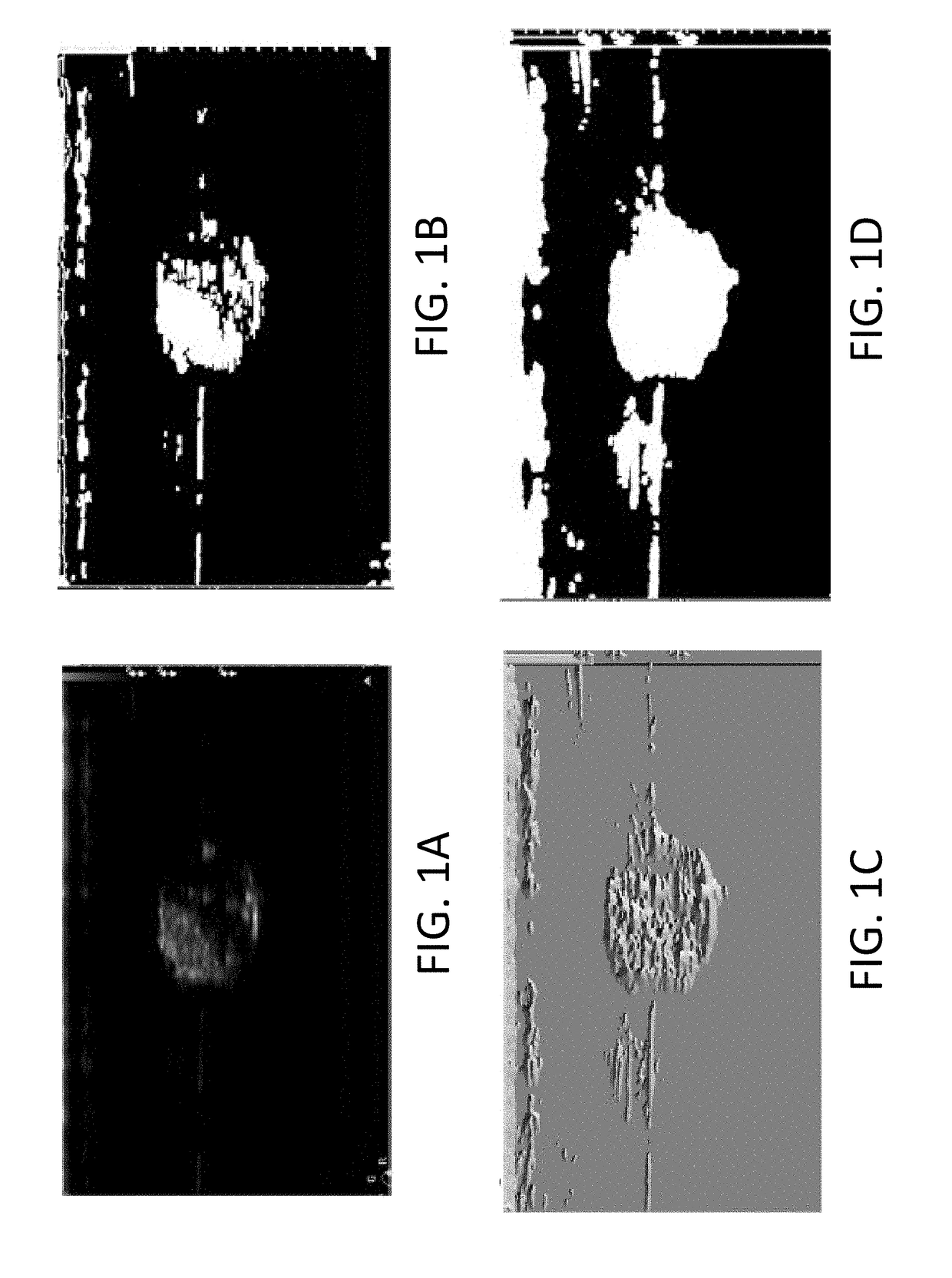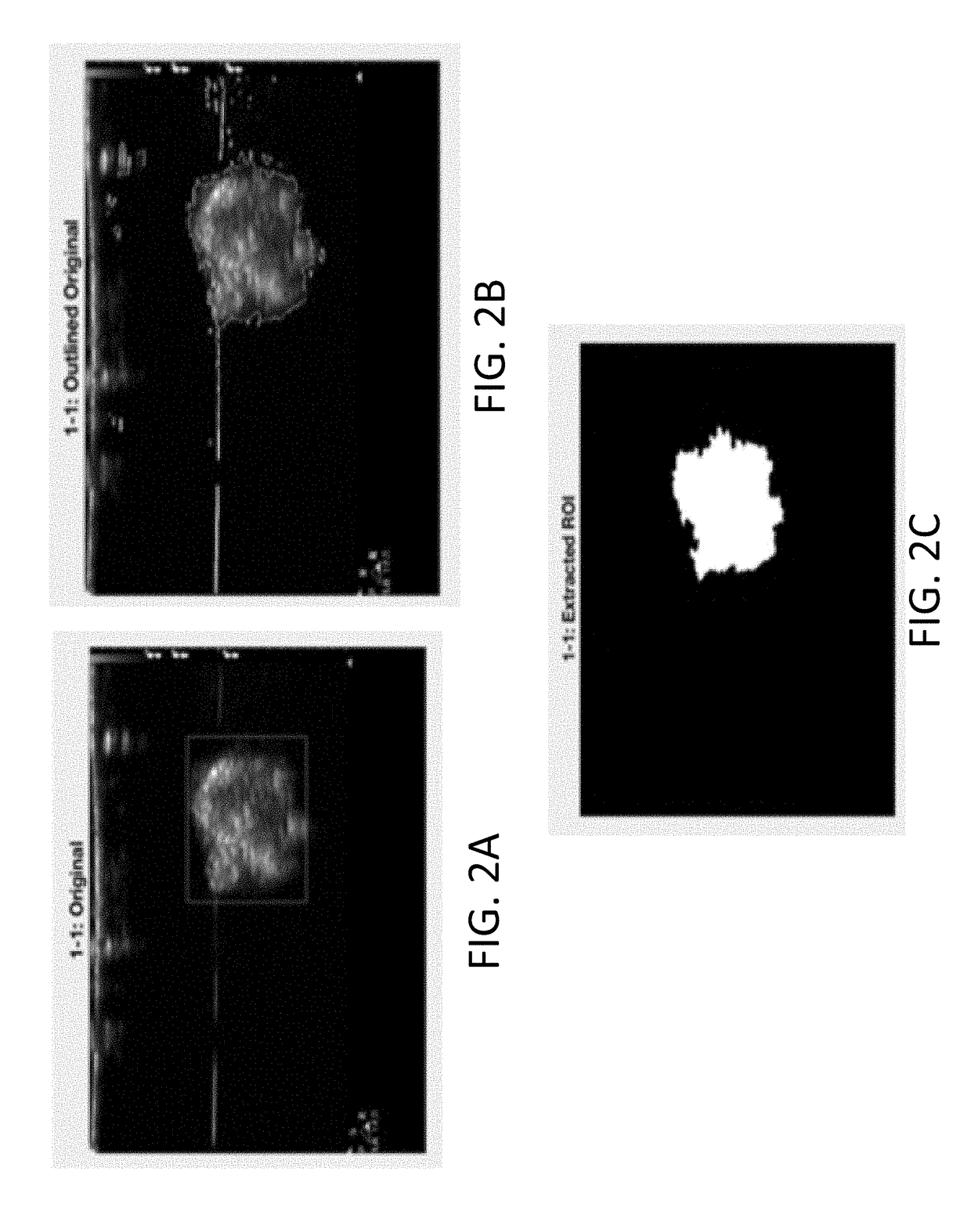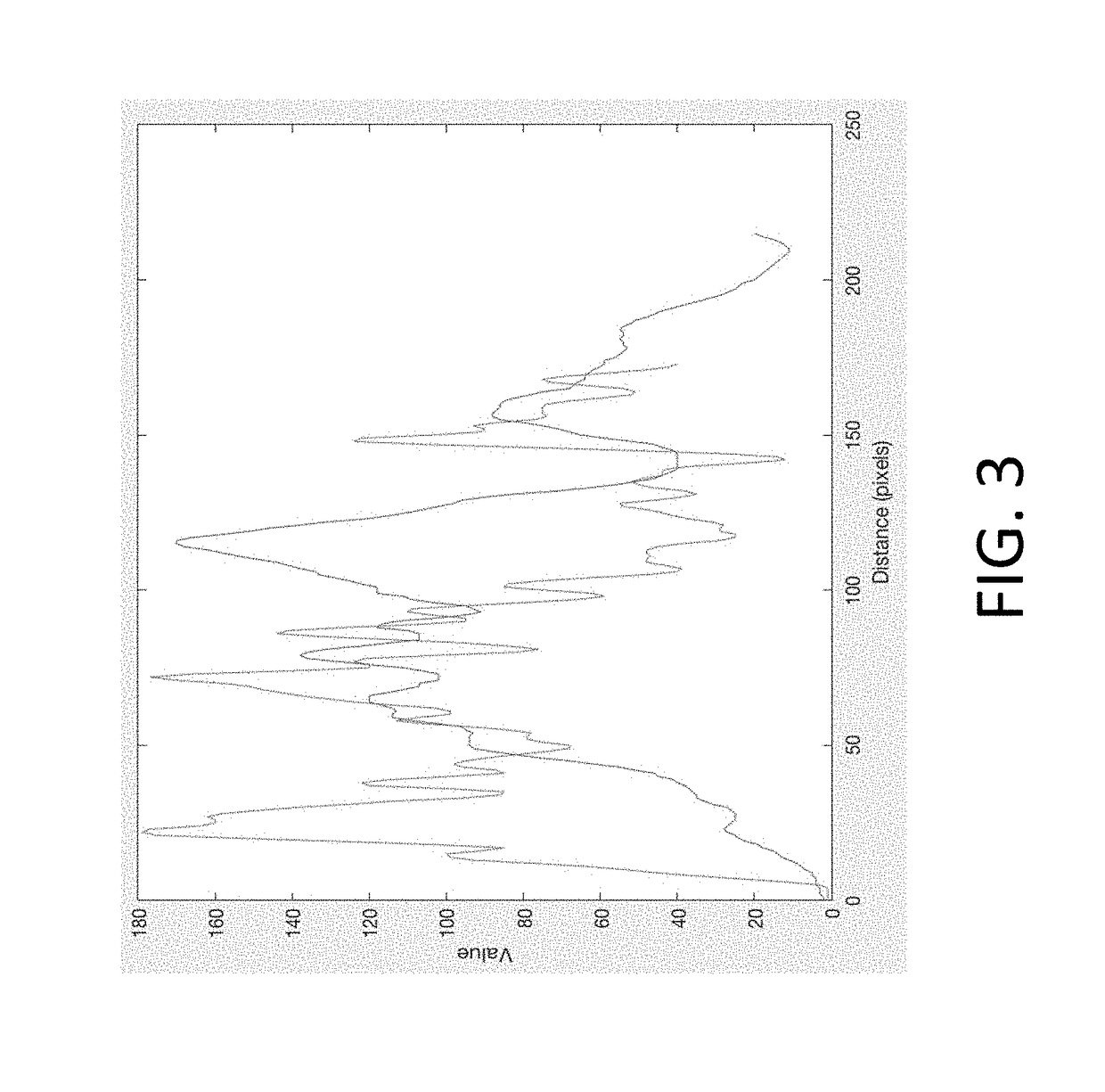Systems and methods for automated image recognition of implants and compositions with long-lasting echogenicity
an image recognition and composition technology, applied in the field of image processing and imageable compositions, can solve the problems of other implants degrading and their length/width changing, and achieve the effects of increasing visibility, identifying and analysing implants more accurately and efficiently, and computationally more efficien
- Summary
- Abstract
- Description
- Claims
- Application Information
AI Technical Summary
Benefits of technology
Problems solved by technology
Method used
Image
Examples
examples
[0102]1. An algorithm was designed to automatically detect soft materials (specifically, hydrogels) in ultrasound images. The gels comprised various ultrasound contrast agents. The objective was to analyze the echogenicity and homogeneity of various ultrasound contrast agents. Gels were prepared consisting of the following UCA's: argon microbubbles (n=6), chitosan (n=5), and glass microspheres (n=4). The algorithm was run on the images and showed an accuracy of 96.47% (p-value<0.0001). After converting the images to binary images and performing morphological techniques such as smoothing, the Sobel edge detection method was used to find the location parameters of each gel. The extracted ROI was then used to determine the echogenicity and homogeneity. The results showed that glass microspheres were more echogenic than chitosan, which was more echogenic than argon microbubbles. Chitosan had the greatest homogeneity of the three UCA's, but did have aggregation in certain areas of the ge...
PUM
| Property | Measurement | Unit |
|---|---|---|
| diameter | aaaaa | aaaaa |
| diameter | aaaaa | aaaaa |
| diameter | aaaaa | aaaaa |
Abstract
Description
Claims
Application Information
 Login to View More
Login to View More - R&D
- Intellectual Property
- Life Sciences
- Materials
- Tech Scout
- Unparalleled Data Quality
- Higher Quality Content
- 60% Fewer Hallucinations
Browse by: Latest US Patents, China's latest patents, Technical Efficacy Thesaurus, Application Domain, Technology Topic, Popular Technical Reports.
© 2025 PatSnap. All rights reserved.Legal|Privacy policy|Modern Slavery Act Transparency Statement|Sitemap|About US| Contact US: help@patsnap.com



